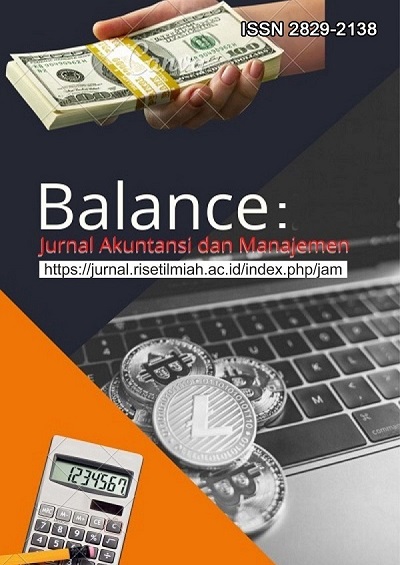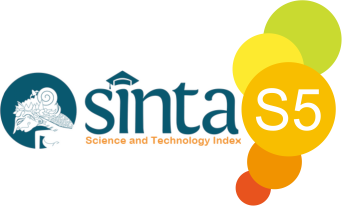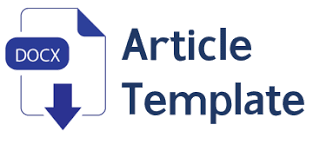Pajak Domestik: Tinjauan Literature sistematis tentang Strategi dan Kepatuhan
DOI:
https://doi.org/10.59086/jam.v4i1.666Keywords:
Domestic Tax Planning, TAx Strategies, Tax Compliance Reputational, Tax GovernanceAbstract
This study aims to systematically examine the trends, strategies, and the relationship between domestic tax planning and tax compliance based on an analysis of 25 scientific articles published between 2016-2024. Using the Systematic Literature Review (SLR) method, this study identifies a shift in research focus over the period, from merely optimizing tax burdens toward integrating aspects of corporate governance, fiscal reputation, and sustainability. The strategic approaches identified include the use of tax shielding through depreciation and interest deductions, the optimization of fiscal accounting methods, the utilization of domestic tax incentives, and internal restructuring. Furthermore, the findings show that moderate and compliance-based domestic tax planning positively affects tax compliance levels, while aggressive practices tend to undermine trust in the tax system. Factors such as tax literacy, administrative transparency, reputational risks, and tax digitalization play a crucial role in strengthening the relationship between domestic tax planning and fiscal compliance. This study contributes to enriching the understanding of the dynamics of domestic fiscal strategies amid increasingly complex regulatory demands and the growing need for ethical corporate governance.
Downloads
References
Adhikari, A., Derashid, C., & Zhang, H. (2006). Public policy, political connections, and effective tax rates: Longitudinal evidence from Malaysia. Journal of Accounting and Public Policy, 25(5), 574–595. https://doi.org/10.1016/j.jaccpubpol.2006.07.001
Ajzen, I. (1991). The theory of planned behavior. Organizational Behavior and Human Decision Processes, 50(2), 179–211. https://doi.org/10.1016/0749-5978(91)90020-T
Allingham, M. G., & Sandmo, A. (1972). Income tax evasion: A theoretical analysis. Journal of Public Economics, 1(3–4), 323–338. https://doi.org/10.1016/0047-2727(72)90010-2
Alm, J., & McClellan, C. (2012). Tax morale and tax compliance from the firm’s perspective. Kyklos, 65(1), 1–17. https://doi.org/10.1111/j.1467-6435.2011.00524.x
Amelia, S., & Santoso, A. (2021). Persepsi konsultan pajak terhadap tarif dan kepatuhan klien. Jurnal Ilmu Multidisiplin Indonesia, 2(3), 55–66. https://doi.org/10.31219/osf.io/7eq9c
Ardiansyah, M. F., & Rahma, A. (2022). Pemanfaatan layanan perpajakan digital oleh UMKM kuliner. Jurnal Mahasiswa Perpajakan FEB UB, 13(1),55– 68. https://doi.org/10.21776/ub.jmp.2022.013.01.5
Azmi, A. A. C., & Kamarulzaman, Y. (2010). Adoption of tax e-filing: A conceptual paper. African Journal of Business Management, 4(5),599–603. https://academicjournals.org/journal/AJBM/article-full-text-pdf/831FAFE15236
Bird, R., & Zolt, E. (2008). Tax policy in emerging countries. Environment and Planning C: Government and Policy, 26(1), 73–86. https://doi.org/10.1068/c0741
Cao, Z., Currall, S. C., & Yin, J. (2019). Political connections and tax avoidance in state-owned enterprises. China Journal of Accounting Research,12(4),293–310. https://doi.org/10.1016/j.cjar.2019.11.002
Chen, S., Schuchard, R., & Stomberg, B. (2019). Measuring uncertainty and its impact on tax avoidance. Review of Accounting Studies, 24, 731–758. https://doi.org/10.1007/s11142-019- 09514-2
De Simone, L., Mills, L. F., & Stomberg, B. (2020). Using public disclosure to shift the locus of tax compliance enforcement: Evidence from voluntary disclosure programs. Contemporary Accounting Research, 37(1), 414–444. https://doi.org/10.1111/1911-3846.12528
Desai, M. A., & Dharmapala, D. (2006). Corporate tax avoidance and high-powered incentives. Journal of Financial Economics, 79(1), 145–179. https://doi.org/10.1016/j.jfineco.2005.02.002
Devereux, M. P., Liu, L., & Loretz, S. (2017). The elasticity of corporate taxable income: New evidence from UK tax records. American Economic Journal: Economic Policy, 9(3), 1–
https://doi.org/10.1257/pol.20150467
Graham, J. R. (2003). Taxes and corporate finance: A review. The Review of Financial Studies, 16(4), 1075–1129. https://doi.org/10.1093/rfs/hhg033
Hanlon, M., & Heitzman, S. (2010). A review of tax research. Journal of Accounting and Economics, 50(2–3), 127–178. https://doi.org/10.1016/j.jacceco.2010.09.002
Hutapea, F., & Simbolon, M. (2023). Optimalisasi perencanaan pajak dalam perusahaan domestik. Jurnal Pajak Indonesia, 7(1),55–70.https://garuda.kemdikbud.go.id/documents/detail/3270017
Johannesen, N., Tørsløv, T. R., & Wier, L. (2016). Are less developed countries more exposed to multinational tax avoidance? Method and evidence from micro-data. The World Bank Economic Review, 31(3), 664–690. https://doi.org/10.1093/wber/lhw003
Kirchler, E., & Hoelzl, E. (2020). Tax compliance and policy effectiveness: The role of trust and cooperation. International Tax and Public Finance, 27(1), 175–
https://doi.org/10.1007/s10797-019-09577-2
Lanis, R., & Richardson, G. (2012). Corporate social responsibility and tax aggressiveness: An empirical analysis. Journal of Accounting and Public Policy, 31(1), 86–
https://doi.org/10.1016/j.jaccpubpol.2011.10.006
Lestari, M. D. (2024). Efisiensi fiskal melalui perencanaan pajak: Studi pada sektor industri kreatif. Jurnal Akuntansi dan Keuangan
Matondang, A., Rahma, T., & Harahap, D. (2024). Implementasi kebijakan pajak karbon di negara berkembang: Tantangan dan peluang. Jurnal Kebijakan Fiskal dan Lingkungan, 6(1), 33–46. https://doi.org/10.31219/osf.io/9y36d
Nasution, A., Siregar, H., & Lumbantobing, P. (2022). Pengaruh edukasi perpajakan terhadap perilaku kepatuhan wajib pajak. Jurnal Akuntansi dan Pajak, 23(1), 50–60. https://doi.org/10.31227/osf.io/jy7xv
Nugroho, B., & Pratama, M. (2023). Risiko etis dalam strategi perencanaan pajak agresif. Jurnal Etika Bisnis dan Pajak, 11(2), 99–110. https://doi.org/10.31219/osf.io/bn7sr
OECD.(2015). Tax incentives for investment: A global perspective. OECD Publishing. https://doi.org/10.1787/9789264218789-en
OECD. (2021). Tax Administration 2021: Comparative Information on OECD and Other Advanced and Emerging Economies. OECD Publishing. https://doi.org/10.1787/74d162b6-en
Slemrod, J. (2007). Cheating ourselves: The economics of tax evasion. Journal of Economic Perspectives, 21(1), 25–48. https://doi.org/10.1257/jep.21.1.25
Torgler, B. (2007). Tax compliance and tax morale: A theoretical and empirical analysis. Edward Elgar Publishing.https://doi.org/10.4337/9781847207203
Downloads
Published
How to Cite
Issue
Section
License
Copyright (c) 2025 Ayu fitria Putri, Luk luk fuadah

This work is licensed under a Creative Commons Attribution 4.0 International License.
This is an open-access journal. All works are published under the Creative Commons license CC-BY which means that all content is freely available at no charge to the user or his/her Institution. Users are allowed to read, download, copy, write, improve, and create derivative creation even for other lawful purposes, this license permits anyone to, as long as they cite and license the derivative creation under similar terms

This work is licensed under a Creative Commons Attribution 4.0 International License.


















